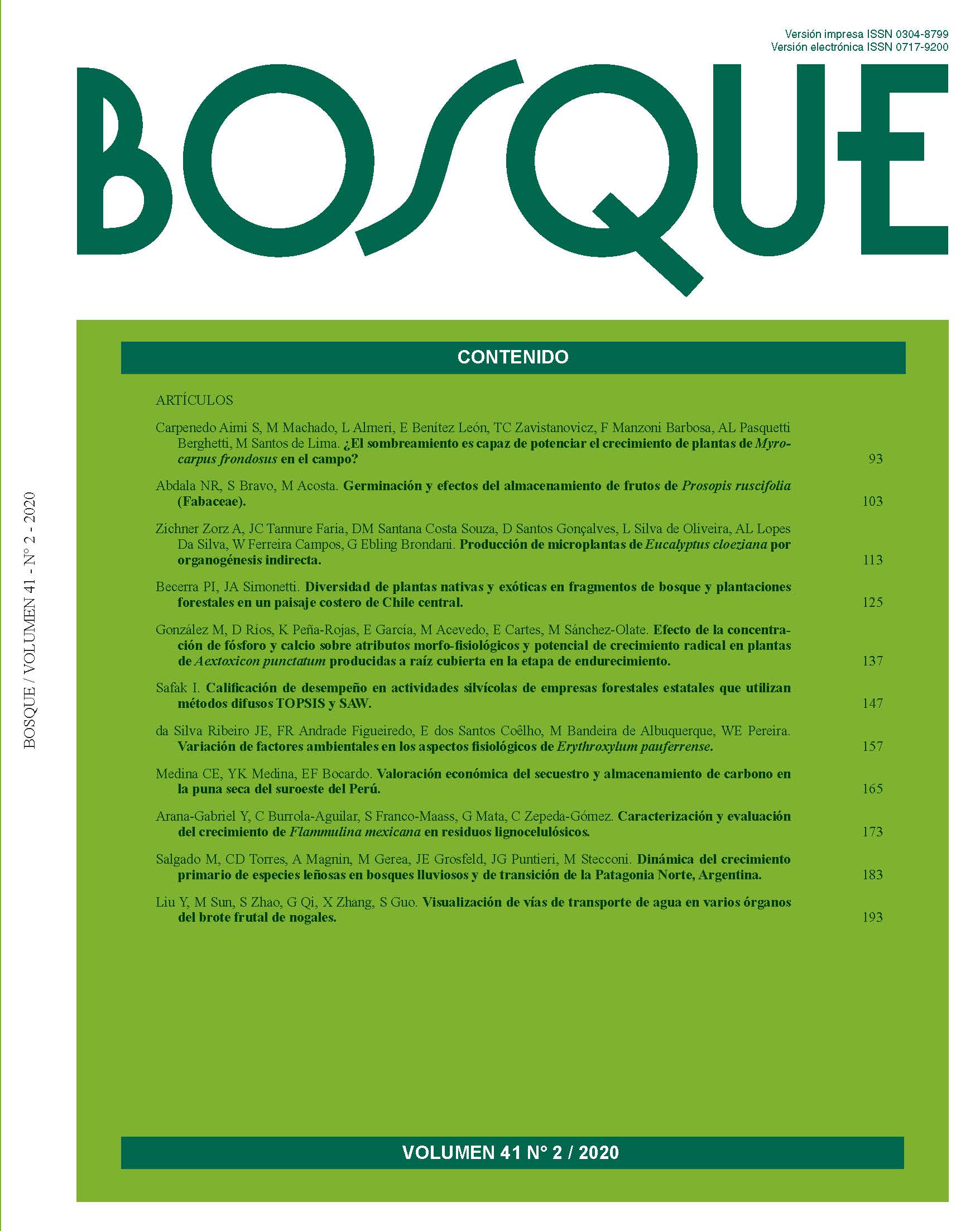Efecto de la concentración de fósforo y calcio sobre atributos morfo-fisiológicos y potencial de crecimiento radical en plantas de Aextoxicon punctatum producidas a raíz cubierta en la etapa de endurecimiento
Contenido principal del artículo
Resumen
El éxito de programas de restauración por medio del establecimiento de una cubierta vegetal en áreas que han sido alteradas, se relaciona directamente con atributos morfo-fisiológicos de las plantas que se establecen en condiciones de campo. Estos atributos han sido estudiados principalmente para diversas especies forestales a nivel nacional e internacional, no obstante, para especies nativas la investigación aun es incipiente. El objetivo de este estudio es determinar el efecto de diferentes concentraciones de fósforo y calcio en la etapa de endurecimiento en vivero, sobre atributos morfológicos (longitud de tallo, diámetro de cuello, área foliar), fisiológicos (estatus nutricional) y potencial de crecimiento radical (largo y número de raíces nuevas) de plantas de olivillo (Aextoxicon punctatum) producidas a raíz cubierta. Se definieron nueve esquemas nutricionales que variaron fósforo y calcio en tres concentraciones cada uno (0, 150 y 300 mg L-1). Luego de 13 semanas, periodo de endurecimiento, no se observaron diferencias significativas entre los tratamientos para las variables morfológicas y de potencial de crecimiento raíces. Sin embargo, tratamientos con aplicaciones de 300 mg L-1 de fósforo generaron las mayores concentraciones a nivel foliar de nitrógeno y las menores de calcio. Dosis de 300 mg L-1 de calcio aplicadas en el medio determinaron una mayor concentración foliar del mismo elemento, y un mayor número de raíces y más largas.

